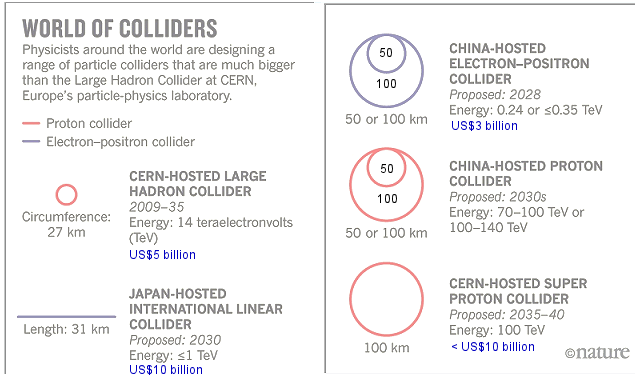
- International Linear Collider (ILC) - It is proposed by Japanese scientists and will be built in Japan. The 31 km track would collide electrons and positrons to produce cleaner debris than the mess from the composite particles of protons. It will carry out detailed studies of the Higgs boson and the top quark at a cost of US$10 billion shared by the US Department of Energy.
- China-hosted Electron-Positron Collider - The US$3 billion project will be partially funded by the international community and focused on precision measurements of the Higgs and other particles. The facility can be upgraded to a proton collider at mush higher energy. See "Chinese Super-collider".
Figure 43 Future Colliders [view large image]
- Super-LHC - The interim plan is a soup-up version of the LHC with a new generation of super-conducting magnets boosting the energy to 20 Tev by 2035. Further upgrade depends on China's plan for its proton collider and whether new physics is found by the current LHC.